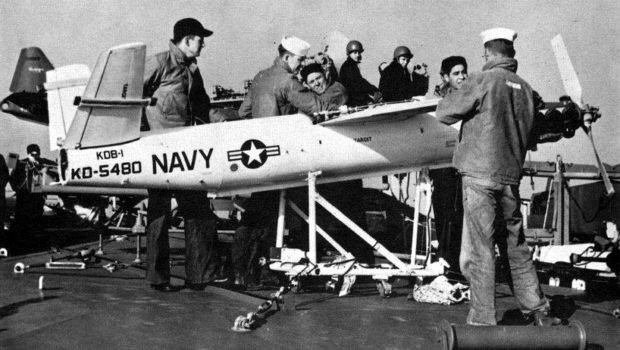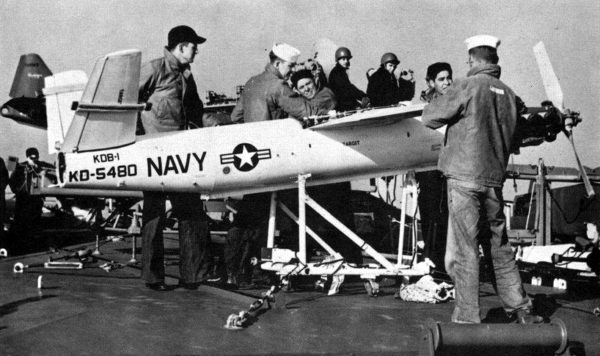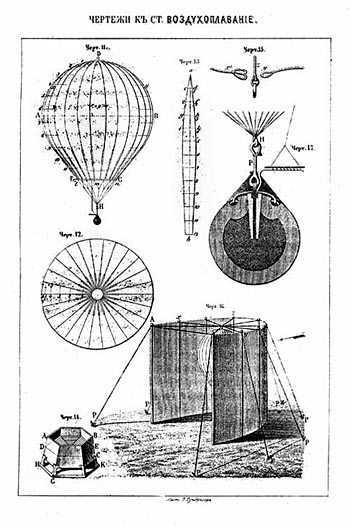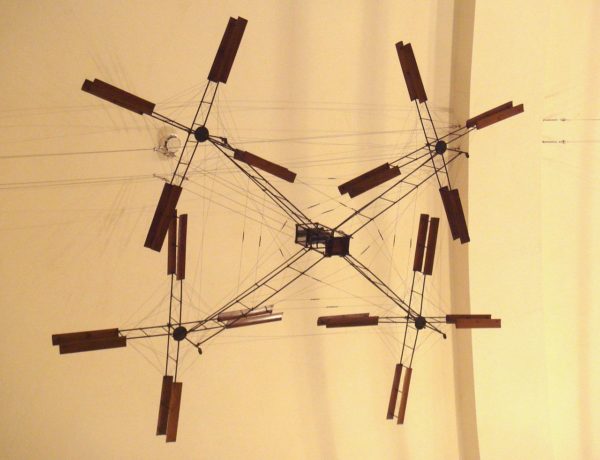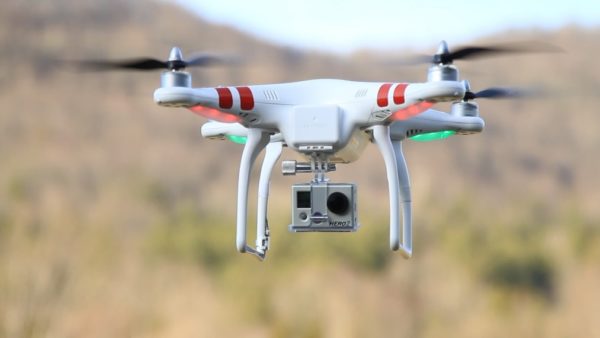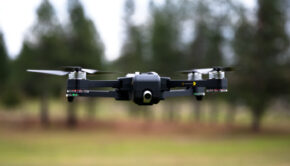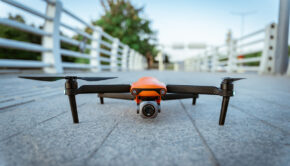Drones: How We Got Here and Where We Are Headed
Talking about the history of drones, is talking about the evolution of Unmanned Aerial Vehicles, which will be referred to as “UAV” in this article. While the term “drone” is fairly recent, the concept of it might be older than what you might think. To satisfy that curiosity we will be diving deep, or should I say flying high, into the history and future of drones, with the help of the Case Farm.
Image Source: wikimedia.org
The First Drone – Austrian Balloons
The first records of an UAV, date back the 19th century. The term “drone” would only appear later in the 1920s and 30s to refer to the remotely-flown target aircraft used for practice firing of British battleship’s guns. The Austrians were the first to design and manufacture what many consider the first drone: Austrian balloons. Designed for military purposes, these UAVs loaded with explosives were dropped in the Italian city of Venice in 1849. All during the First Italian War of Independence. The Austrians had been developing this idea of an armed UAV for 66 years, since 1783. The core of the idea was to basically engage in remote warfare without having to put soldiers at risk. However, the experience wasn’t as efficient as expected. Mainly due to wind conditions that blew many balloons back to Austrian lines.
Image Source: ctie.monash.edu.au
Gyroplane Development in France
Meanwhile in France, 1907, the Breguet brothers developed one of the first functional rotary-wing aircraft (dubbed Bréguet-Richet Gyroplane I). It had two rotor sets, a steel framework, and four sets of four propellers. It was powered by a 41 kW (55 hp) Renault engine (later an Antoinette water-cooled piston engine, 34 kW (46 hp)). Unfortunately, it wasn’t very effective, as it was only able to fly an altitude of 0.6 m (2.0 ft), with a maximum flight time of 1 minute. Louis Charles Bréguet would later, in 1919, create the commercial airline company known as Air France.
Image Source: wikipedia.org
War Prompts Further Development: WWI and WWII Warfare
One of the effects war as in our society is to prompt the development of new technology. Countries are always seeking to get an edge on war by using the latest warfare (e.g. Austrian ballons). As expected, World War I and World War II saw many funding going to the study and development of such weaponry. At the start of WWI experiments with the first electronic range finder, based on radar, were already in the working. When the war scaled quickly, the Royal Flying Corps (British air force during the Great War), sought to apply that development to create remotely controlled pilot-less aircraft.
“The concept was to develop a small, very simple aircraft. Pack it with explosives and then guide it into a designated target. Thus the RFC Experimental Works were born” – monash.edu.au
By the end of the war, development had reached a point where the US Army commissioned actual unmanned “aerial torpedos” (the cruise missiles of today) that could be remotely directed to the target; named Kettering Bug. However, the war ended before Kettering Bug could be totally developed and shipped in time.
The term “drone”, as previously mentioned, was first used during the 20s~30s Although not confirmed, the popular belief is the term came from the British radio controlled de Havilland Queen Bee target UAVs. In 1936, the U.S. Navy also used the term to refer to their own radio-controlled aerial targets.
During World War II, a radio control model aircrafts enthusiast named Reginald Denny, developed military and hobbyist (consumer) drones (manufacturing the first reliable miniature airplane engine known as “Dennymite”). The catch is Denny also demoed its products to the U.S. Army, presenting them as RP-2, RP-3, and RP-4. Denny and his partners went on to win an Army contract for their radio-controlled RP-4, which was dubbed Radioplane OQ-2. Denny and his partners manufactured around 15,000 drones for the army during World War II.
Fun fact: Actress and pop idol Marilyn Monroe (who was known as Norma Jean Doherty at the time) worked in the plant, as part of the team that assembled the OQ-2s drones.
The Rise of Military Drones – Afghan War and 9/11
Throughout the years, governments and private companies developed ways to enhance the true potential of a drone. Unmanned, accurate targeting, and quick results. The years of Kettering Bug are long gone. Drones are now effective, autonomous, and deadly. It revolutionizes warfare. The first modern military drones (as we know them) were first used in the Afghanistan War in the late 1990s. The U.S. tested and further developed these military UAVs at an increased rate ever since. After 9/11 the CIA and the U.S. Government also launched drone campaigns to hunt down members of Al Qaeda. This was when the public first started to grow accustomed to the term “drone” being broadcasted often on TV news and discussed in newspapers.
Ever since Afghan War, for good or evil the world understood the benefits of drones. They are now used in many war conflicts around the world, mainly by U.S. and Russian troops. However, don’t think less advanced organizations haven’t learned how to use drones for their advantage. For example, ISIS is reported to arm consumer drones with grenades, and use them against Iraqi forces.
The Rise of Consumer / Personal Drones
Just a few years ago, our mind immediately imagined military drones when we heard or read search term, before even realizing its context. Since 2006 that has gradually changed. The commercial drone industry emerged. At first it was only aimed at hobbyists and enthusiasts, but several quadcopter models (4 motor drones) became a global trend. Such quick growth in the market happened because of 3 reasons: commercial drones became compact, autonomous, and packed amazing cameras. Thus, the rise of now popular brands such as DJI and Parrot.
Image Source: youtube.com
In 2013, the Chinese company Dà-Jiāng Innovations (popularly known as “DJI”), launched Phantom. A line of quadcopters that remains to this day as one of the most popular consumer drones in the market. The drone tendency in the last 2 years has been: foldable design (easy to transport anywhere you go), built-in 4K camera with Live Video transmission, and of course autonomous features such as Autopilot and Obstacle Avoidance. These are the main characteristics people are currently looking for in high-budget drones.
Even low-budget toy drones are becoming more sophisticated as companies try to compete in the market. Back in 2015, most toy drones didn’t include cameras and features such as Return-to-Home, Altitude Hold, and Live Video. That quickly changed. Newer toy drones are capable of all this and much more; often priced under $100.
Where is Drone Technology Headed?
The potential in the drone industry is vast and promising. We have only scratched the surface of this modern technology. Everybody as great expectations. Although hard to guess, the next big step might just be fully integrating AI (Artificial Intelligence) in drones, so the aircraft can perform human tasks such as delivery of goods, unassisted video surveillance, and even commercial-jets flying solo. To the consumer UAV, on the other hand, the future can be slightly more predictable. People want fun and useful features, powerful and lightweight aircrafts, simple controls, and of course longer flight range and flight time. One of the other possibilities for the commercial drone is also to integrate AR (Augmented Reality). Some companies such as Walkera, have already launched quadcopters with the capability to interact with the environment and other (same model) drones. Thus, allowing for some fun AR aerial games.
Another promising niche of the industry is aerial racing, as UAVs become faster, more agile, and able to carry longer flights. At the moment, it still is a very hobbyist niche, and it hasn’t grown in popularity as other sectors of the industry such as aerial photography and videography did.
The Age of Drones is here. It no longer is the future, it is our present. For good or evil, the UAV industry is here to stay. It is our responsibility to focus on the positive aspects of this technology and not how we can further weaponize it. Drones can do good. Prototypes are already being designed and tested to help fire fighters and even alert life guards. The past is certain, the future is a mystery. Let’s head the right way and allow drones to help us evolve as and improve as aa society.
“It is possible to fly without motors, but not without knowledge and skill.” – Wilbur Wright

